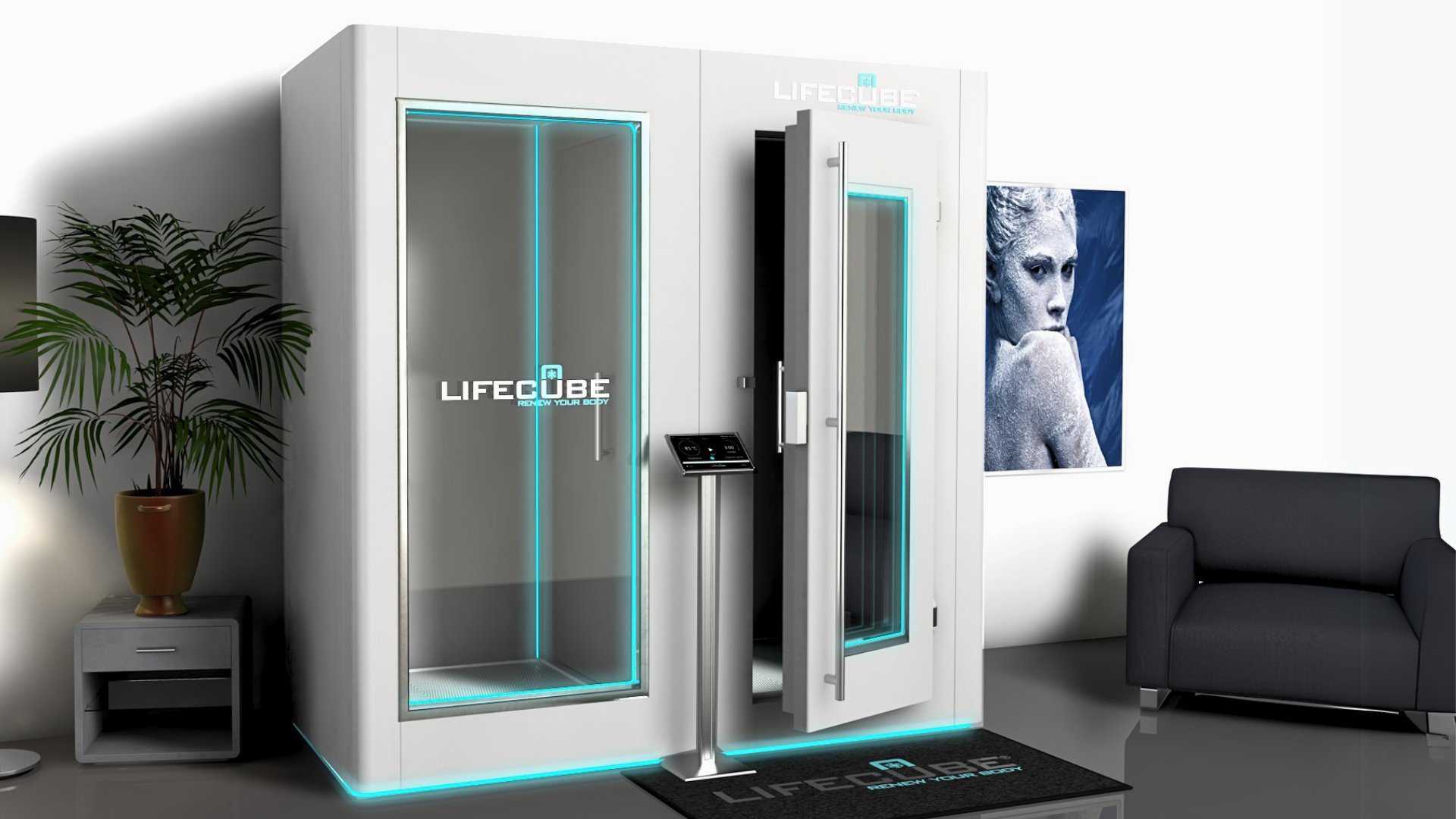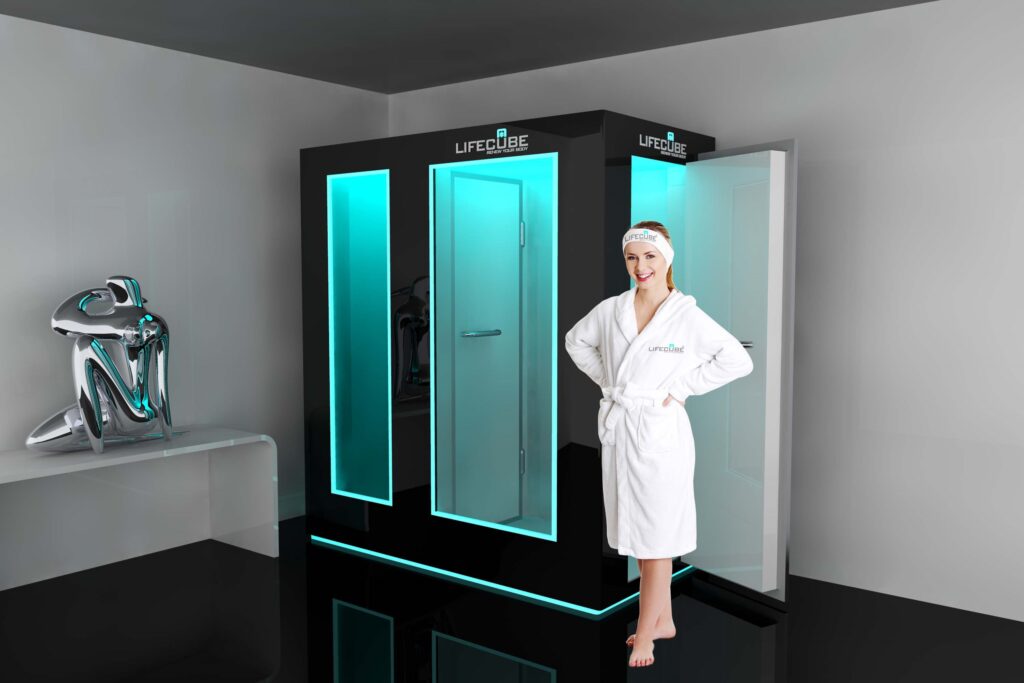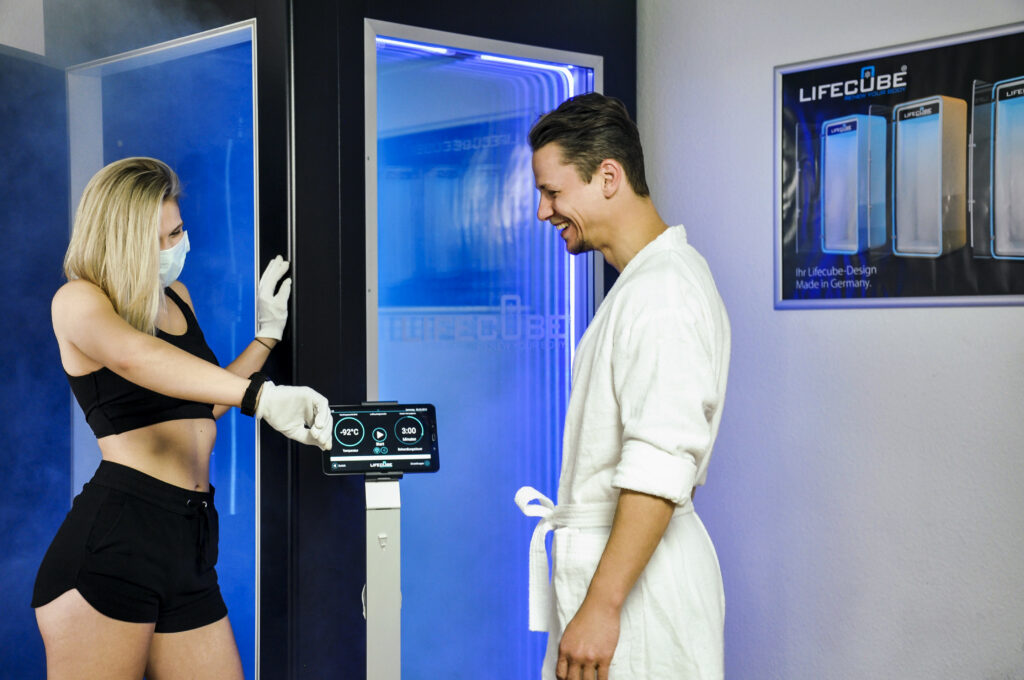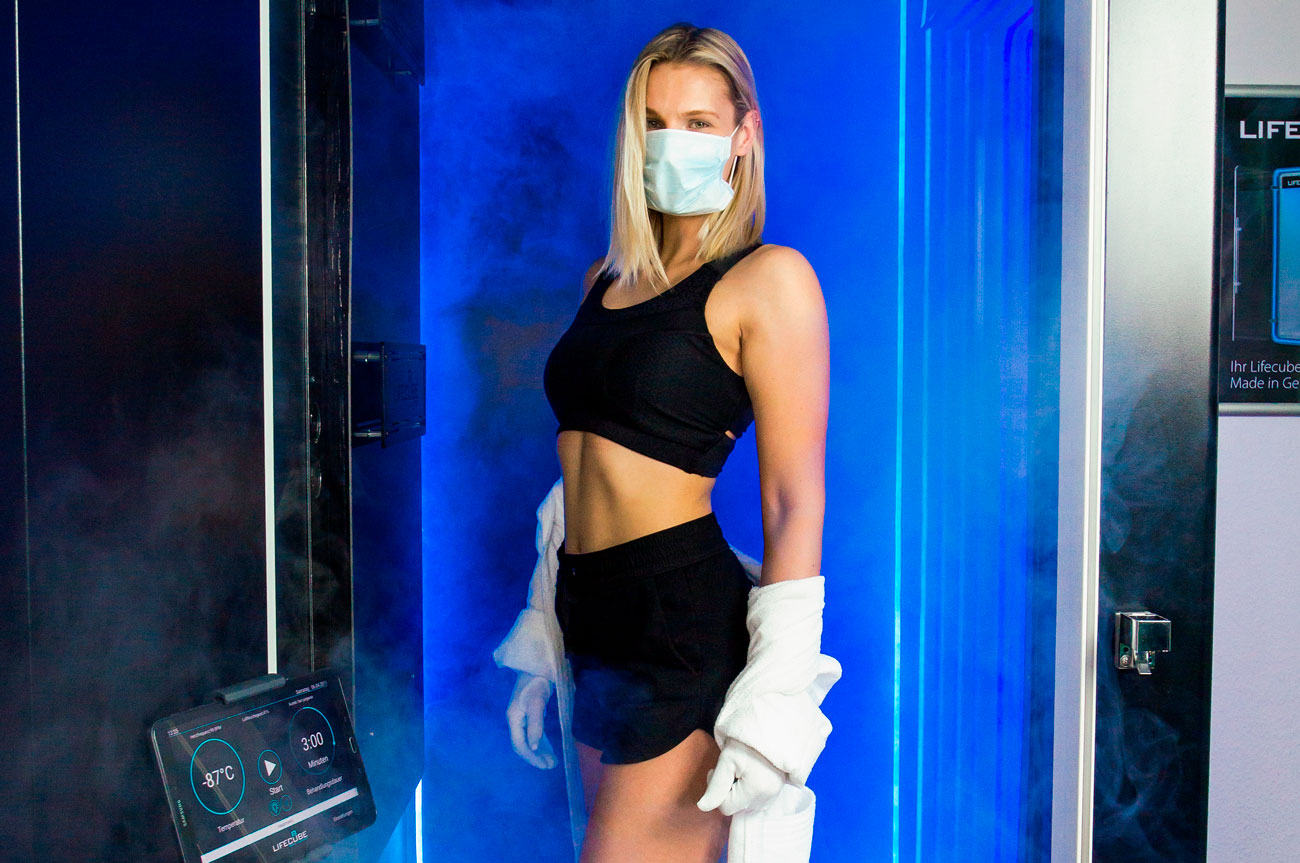It all sounds a bit futuristic—maybe even too good to be true. So, what’s the deal with Cryotherapy for Pain Relief? Is it just another fleeting wellness trend, or could it actually be the solution your body’s been crying out for? With more people stepping into cryo chamber to ease everything from sports injuries to arthritis, it’s worth taking a closer look.
Let’s explore how it works, who it’s for, and whether it’s worth stepping into the deep freeze.
What Exactly Is Cryotherapy for Pain Relief?

At its core, Cryotherapy for Pain Relief is all about using extreme cold to reduce inflammation, ease discomfort, and support the body’s natural healing processes. The term “cryotherapy” comes from the Greek words kryos (meaning cold) and therapeia (meaning cure)—so quite literally, it’s cold therapy.
There are different types of cryotherapy, but when we’re talking specifically about pain relief, these are the most common:
- Whole-body cryotherapy: You step into a cryotherapy chamber (often with your head poking out the top) where your body is exposed to sub-zero temperatures for 2–4 minutes.
- Localised cryotherapy: A device delivers targeted blasts of cold air to specific areas—like a sore knee, lower back, or neck.
- Ice baths: Though not as high-tech, they still count. Cold water immersion is a well-known method used by athletes for muscle recovery and pain reduction.
The key principle behind Cryotherapy for Pain Relief is that cold reduces inflammation, which in turn reduces pain. But there’s more going on under the surface.

How Does Cryotherapy for Pain Relief Work?
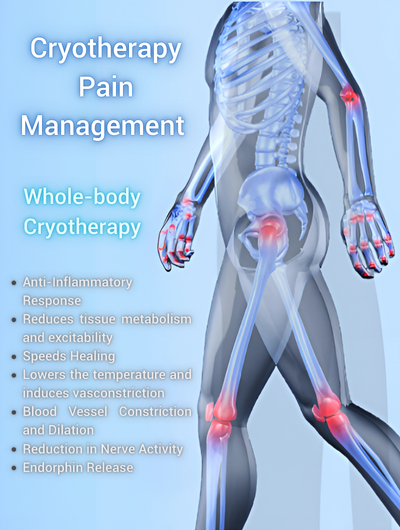
When you expose the body to extreme cold, a number of things happen physiologically:
- Blood Vessel Constriction and Dilation : Initially, the cold causes your blood vessels to constrict, slowing blood flow to the surface. This can help reduce swelling and numb the affected area. Once you step out of the cold, your blood vessels dilate, delivering fresh, oxygen-rich blood that may aid healing and recovery.
- Reduction in Nerve Activity : Cold exposure can temporarily reduce the activity of nerve endings in the skin and muscles. This dampens pain signals travelling to the brain, offering short-term pain relief.
- Anti-Inflammatory Response : Inflammation is the body’s natural response to injury, but chronic inflammation can become problematic. Cryotherapy for Pain Relief helps regulate the inflammatory process, calming overactive immune responses.
- Endorphin Release : Believe it or not, stepping into a freezing cryotherapy chamber can actually give you a bit of a buzz. Cold exposure is linked to increased endorphin levels, which can elevate mood and reduce the perception of pain.

What Conditions Can Cryotherapy Help With?
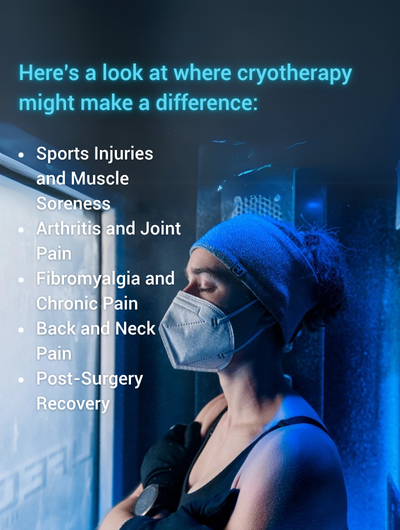
Cryotherapy for Pain Relief has gained popularity not only with athletes but also with people suffering from various medical conditions. Here’s a look at where it might make a difference:
- Sports Injuries and Muscle Soreness : Cryotherapy is well-known in the sporting world. Athletes often use it to manage muscle soreness after intense workouts or to speed up recovery from strains and sprains.
- Arthritis and Joint Pain : Many people with osteoarthritis or rheumatoid arthritis report reduced stiffness and discomfort after cryotherapy sessions. The cold seems to ease inflammation around the joints and improve mobility—at least temporarily.
- Fibromyalgia and Chronic Pain : Although the research is still emerging, some individuals with fibromyalgia and other chronic pain conditions have found Cryotherapy for Pain Relief beneficial in managing flare-ups and improving quality of life.
- Back and Neck Pain : Whether it’s from poor posture, long hours at the desk, or an old injury, localised cryotherapy can provide quick relief for those dealing with lower back or neck discomfort.
- Post-Surgery Recovery : Used under professional supervision, cryotherapy may help manage post-operative swelling and pain, making the recovery process more manageable.

What to Expect During a Cryotherapy Session
Feeling nervous about the idea of stepping into a human freezer? You’re not alone—but most people find the experience far more tolerable than they’d imagined.
- Before You Begin : You’ll be asked to remove jewellery and dress in minimal, dry clothing—typically shorts and a sports bra (or bare chest for men), with gloves, thick socks, slippers, and sometimes ear protection.
- Inside the Chamber : In whole-body cryotherapy, you’ll enter a cryotherapy chamber cooled by refrigerated air. The session lasts between 2–4 minutes, with the temperature dropping rapidly. It’s an extremely dry cold, which feels different from, say, a cold winter wind.
- Afterwards : Once you step out, your body will quickly start warming up. Many people report feeling energised, clear-headed, and refreshed. Localised cryotherapy is more straightforward—cold is applied to one part of the body for a few minutes, and you’re good to go.
How Often Should You Do It?
This depends on why you’re using Cryotherapy for Pain Relief. If you’re dealing with a specific injury, your practitioner might recommend multiple sessions in a short timeframe.
Those with chronic conditions may benefit from regular treatments—perhaps 2–3 times a week. Others simply book in occasionally after a particularly hard workout or flare-up.
As with most treatments, consistency plays a big role in long-term effectiveness.
Who Should Avoid Cryotherapy?
It’s not suitable for everyone. If you’re pregnant, have severe cardiovascular issues, uncontrolled high blood pressure, or suffer from nerve sensitivity or Raynaud’s disease, you should steer clear.
Always consult your GP or a qualified health professional before starting Cryotherapy for Pain Relief, especially if you have underlying medical conditions.
Cryotherapy vs Other Pain Relief Methods
When it comes to managing pain, there’s no shortage of options. From popping a paracetamol to booking a physio session, we’re spoilt for choice—but how does Cryotherapy for Pain Relief stack up against the rest?
Let’s take a look at some of the usual suspects and see how they compare.
- Cryotherapy : This one’s fast, drug-free, and many people find it gives them a real boost—not just physically, but mentally too. It can help reduce inflammation, ease discomfort, and even lift your mood thanks to that rush of endorphins. The downside? It’s not always cheap, and the results can be short-lived unless you go regularly. Plus, it’s not suitable for everyone.
- Painkillers : They’re probably the first thing most of us reach for when something hurts. Painkillers are quick and easy, and they definitely do the job in the short term. But there’s a catch—side effects, dependency risks, and the fact that they often mask the problem rather than help fix it.
- Physiotherapy : Now here’s a solid long-term option. Physio is tailored to your individual needs and works to address the root of the problem, not just the symptoms. The flip side? It requires commitment. Regular sessions, doing your exercises at home, and being patient while progress builds up.
- Massage Therapy : A good massage can work wonders for tension and circulation, especially if your pain is linked to tight muscles or stress. It’s a lovely way to unwind and look after yourself. That said, massage might not do much for pain that’s rooted in inflammation or deeper joint issues.
- Heat Therapy : Whether it’s a hot water bottle, a heat pack, or a nice soak in the tub, heat can be very soothing—especially for stiff muscles. Just be careful: if inflammation is the culprit, heat can actually make things worse, not better.
Each of these pain relief methods has its place, and what works best often comes down to your personal needs and preferences. But Cryotherapy for Pain Relief stands out as a non-invasive, natural option that fits neatly into most wellness routines. It’s quick, requires no medication, and might just give you that refreshing, icy edge over your discomfort. Many wellness centres now offer cryotherapy packages, making it easier and more affordable to incorporate regular sessions into your routine.
What Do People Say About It?

Anecdotal evidence for Cryotherapy for Pain Relief is strong—especially from athletes and those living with chronic pain. Some report feeling better almost immediately, with noticeable reductions in swelling and discomfort. Others feel more energetic or sleep better after a session.
Of course, individual results can vary, and while cryotherapy has shown promise in early studies, more long-term research is needed to fully understand its potential.

Is Cryotherapy for Pain Relief Right for You?
If you’re looking for a drug-free, non-invasive way to manage pain—especially the kind linked to inflammation—Cryotherapy for Pain Relief is certainly worth considering. Whether you’re battling post-gym soreness, chronic joint issues, or just looking for something new to support your body, the cold might offer the relief you’ve been missing.
Just remember: it’s not a magic cure, and it’s not meant to replace medical treatment. But when used properly, cryotherapy can be a powerful tool in your pain management toolkit.
FAQ
How does cryotherapy relieve pain?
The extreme cold helps numb nerve endings and reduce inflammation in the affected area. It also boosts circulation and triggers a rush of endorphins—the body’s natural feel-good chemicals—giving both physical relief and a mood lift.
Is cryotherapy safe?
Generally, yes—when it’s done properly and under professional supervision. It’s important to wear protective gear (gloves, socks, etc.) and stick to the recommended time limits. However, it’s not suitable for everyone—especially if you’re pregnant or have certain medical conditions like severe heart issues or Raynaud’s disease.
How often should I do cryotherapy for pain relief?
It depends on your needs. Some people go a few times a week to manage chronic conditions, while others use it occasionally for recovery after intense workouts. If you’re using it for an injury or ongoing pain, a short course of regular sessions might be most effective.
What does it feel like inside a cryotherapy chamber?
Cold—really cold! But it’s a dry cold, so it’s more tolerable than you might think. Most sessions only last 2 to 4 minutes, and many people say they feel energised and refreshed afterwards.
Is it better than other pain relief methods?
It depends on your condition and what works for your body. Cryotherapy is fast, drug-free, and non-invasive, but the effects can be temporary unless it’s done consistently. Other methods like physiotherapy or massage may offer longer-term benefits, especially when used alongside cryotherapy.
Can cryotherapy help with arthritis or joint pain?
Yes, many people with osteoarthritis or other joint issues say cryotherapy helps reduce stiffness and improve mobility—at least for a little while. It can be especially useful during flare-ups when inflammation is high.
Where can I try cryotherapy in the UK?
You’ll find cryotherapy chambers and services at many sports recovery centres, physiotherapy clinics, and wellness studios across the UK. Just make sure the provider is qualified and follows proper safety protocols.

